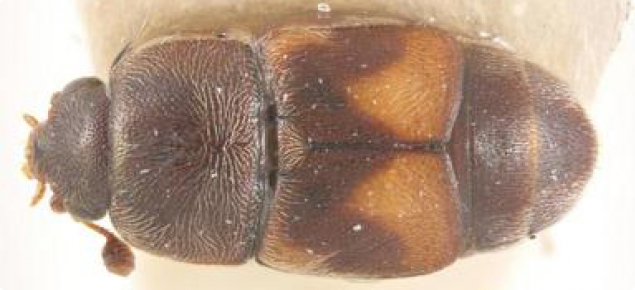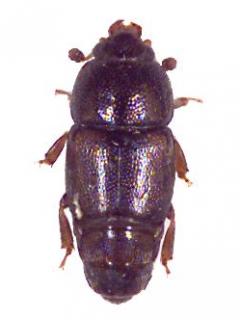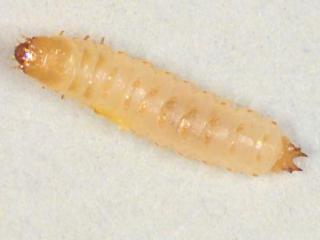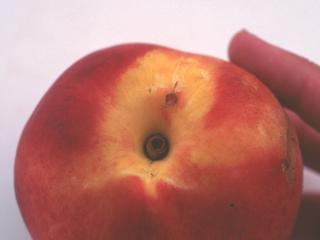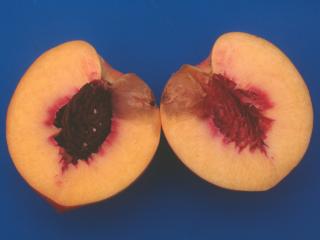Identification
Adult Carpophilus are small at around 3mm long, oblong shaped beetles with short wing covers such that the end of the abdomen is not covered and have clubbed antennae. They can be black, brown or mottled yellow. Larvae are yellowish with a brown head and forked tail and are about 5mm long when fully grown.
Life cycle
Driedfruit beetle do not breed in fruit on the tree. Adults lay eggs in rotting or damaged fruit on the orchard floor. Mature larvae emerge from the fruit and pupate in the ground.
Adults emerge from the pupae and attack fruit in late spring and summer. If no hosts are available they overwinter in cracks in the tree, under bark or in mummified fruit. It takes about a month in summer to develop from egg to adults so there are many generations per year.
Driedfruit beetles are strong fliers and can travel several kilometres in search of hosts. Summer rainfall and rotting of fruit provides the best conditions for beetle breeding. Dry summer and autumn conditions reduce the threat in the following season by providing less favourable breeding conditions.
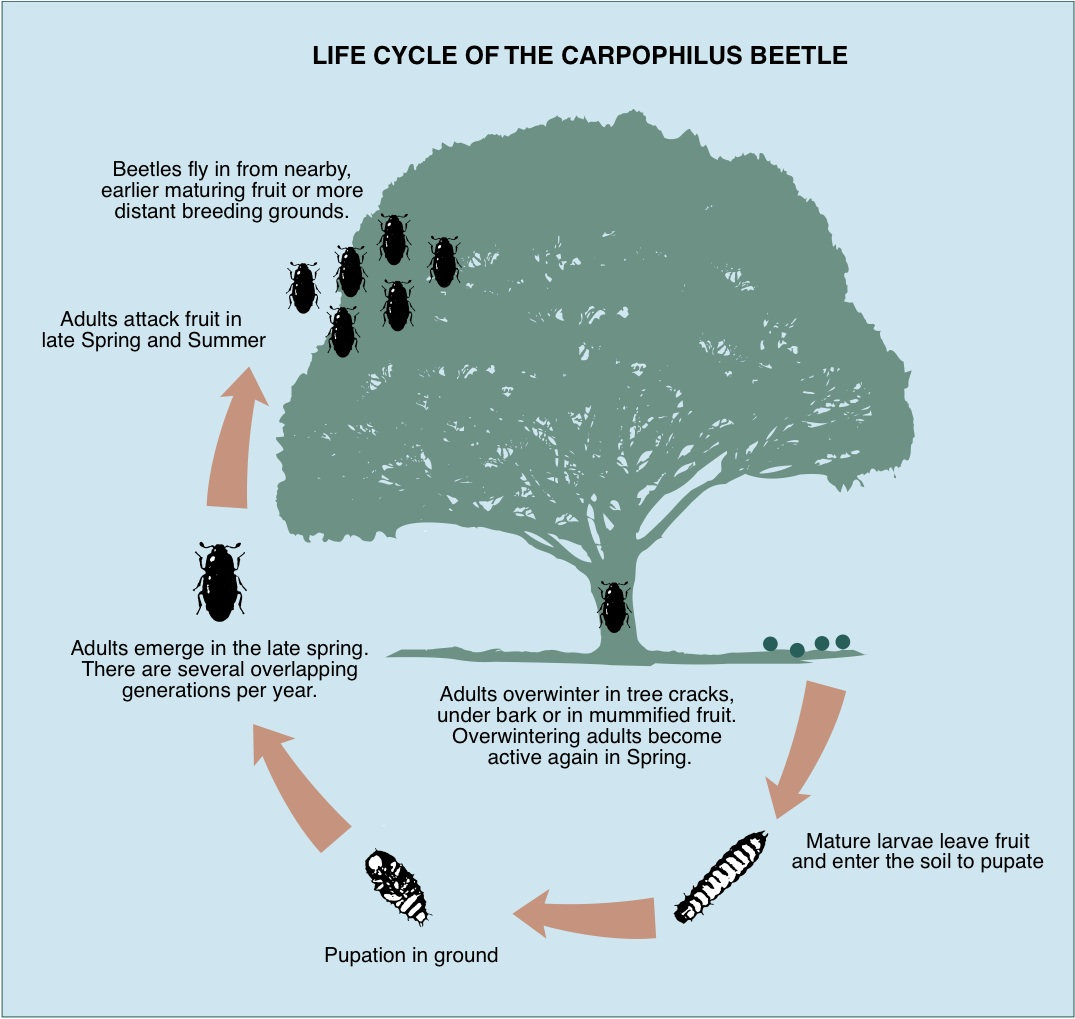
Damage
Most commercial feeding damage is done to ripening stone fruit. Stone fruit can be attacked on the tree, beetles burrow into the fruit, particularly near the stem end suture line. They also enter through splits and mechanical damage. In other fruits such as citrus, apples and figs, only fallen fruit is attacked.
Carpophilus beetles are a major vector of brown rot. As they crawl through damaged fruit, the spores of brown rot stick to their bodies and are spread through the tree canopy and from orchard to orchard. The disease is carried on the body of the insect and fruit can become infected with the disease simply by contact, without the beetle actually feeding on fruit. Control of carpophilus, where they are present, is an important part of controlling brown rot.
Management
Driedfruit beetles are introduced pests in Australia and they have no known natural enemies to limit their abundance.
Good hygiene is the most important aspect in the management of this pest. Fallen fruit should be removed or destroyed regularly during summer to break the life cycle, because eggs are laid only in damaged and rotting fruit. Sweeping fruit from under drip lines and mulching is an option. Good fruit fly control will help ensure that there are less damaged fruit on the tree or on the ground.
As carpophilus beetles can move several kilometres, area wide cooperation is needed for most effective control. Growers should inspect fallen fruit to assess beetle activity and the potential for damage.
A lure trap for both monitoring and management of driedfruit beetles is available commercially. This approach could be considered where driedfruit beetles are a consistent pest. For details on the trapping system, consult the Australian Pesticides and Veterinary Medicine Authority website.
Insecticides registered for the control of driedfruit beetles in deciduous fruit tree orchards in Western Australia are listed in the Pome and summer fruit orchard spray guide, refer also to Infopest for information on chemical registrations. Insecticide control is not as effective a control as removing unwanted fruit. Trees should be monitored as the fruit approaches maturity and becomes susceptible to attack. Sprays are applied to cover the fruit and foliage before the beetles can reach damaging levels. Decisions to respray trees should be based on monitoring and label recommendations. Insecticides do not give long-term protection against the adult beetles that can migrate into the area.

